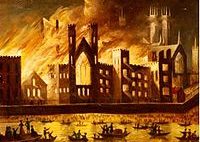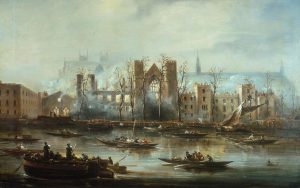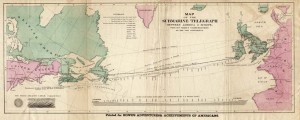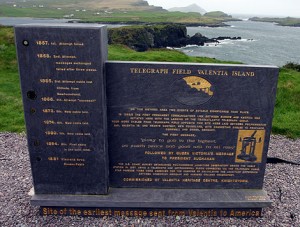queen victoria

 I think most people have heard of Big Ben, the famous clock tower in London, but what you may not know is that originally, there was no clock and no tower. The Houses of Parliament and Elizabeth Tower, most often called Big Ben, are among London’s most iconic landmarks and favorite London attractions. Big Ben is actually the name that was given to the massive bell inside the clock tower, which weighs more than 13 tons, not to the clock or the tower. At night the four clock faces are illuminated, and the effect is spectacular.
I think most people have heard of Big Ben, the famous clock tower in London, but what you may not know is that originally, there was no clock and no tower. The Houses of Parliament and Elizabeth Tower, most often called Big Ben, are among London’s most iconic landmarks and favorite London attractions. Big Ben is actually the name that was given to the massive bell inside the clock tower, which weighs more than 13 tons, not to the clock or the tower. At night the four clock faces are illuminated, and the effect is spectacular.
The British Parliament is located in the Palace of Westminster. In October of 1834, a fire destroyed much of the palace and it had to be rebuilt. At that time it was decided that there would be an spectacular addition of a clock at the top of a tower. The clock is magnificent. Each dial measures almost 23 feet in diameter. The hands are 14 feet long and weigh about 220 pounds, including counterweights. The numbers on the clock’s face are approximately 23 inches long. There are 312 pieces of glass in each clock dial. When parliament is in session, a special light above the clock faces is illuminated. Big Ben’s timekeeping is strictly regulated by a stack of coins placed on the huge pendulum. Big Ben has rarely stopped. Even after a bomb destroyed the Commons chamber during World War II, the clock tower survived and Big Ben continued to strike the hours. The chimes of Big Ben were first broadcast by the BBC on December 31, 1923. It is a tradition that continues to this day. The Latin words under the clock face read Domine Salvam Fac Reginam Nostram Victoriam Primam, which means “O Lord, keep safe our Queen Victoria the First.” In June 2012 the House of Commons announced that the clock tower was to be renamed the Elizabeth Tower in honor of Queen Elizabeth II’s Diamond Jubilee.
A massive bell was required and the first attempt made by John Warner and Sons at Stockton-On-Tees cracked irreparably. Big Ben first rang across Westminster on May 31, 1859. A short time later, in September 1859, Big 
 Ben cracked. The metal was melted down and the bell recast in Whitechapel in 1858. A lighter hammer was fitted and the bell rotated to present an undamaged section to the hammer. This is the bell as we hear it today, and the real owner of the name Big Ben. Elizabeth Tower stands at more than 105 yards tall, with 334 steps to climb up to the belfry and 399 steps to the Ayrton Light at the very top of the tower.
Ben cracked. The metal was melted down and the bell recast in Whitechapel in 1858. A lighter hammer was fitted and the bell rotated to present an undamaged section to the hammer. This is the bell as we hear it today, and the real owner of the name Big Ben. Elizabeth Tower stands at more than 105 yards tall, with 334 steps to climb up to the belfry and 399 steps to the Ayrton Light at the very top of the tower.
 Communications have come a long way over the years. Still, most of us give little thought to how difficult it used to be in the not so distant past. Of course, letters were originally the only form of distant communications, and I suppose that some people, like my Uncle Bill, still think that is the best form of communication there ever was. These days, I would have to agree with them in many ways, but there are times when a letter is not quick enough. When the telegraph was invented in the 1830s and 1840s, it revolutionized communication. No longer did it take months to get an important message to family members. Prior to that time, a loved on might be dead for months before the family found out. I’m sure that in most cases, people still relied on letters for most things, so receiving an unexpected telegraph was probably a little scary.
Communications have come a long way over the years. Still, most of us give little thought to how difficult it used to be in the not so distant past. Of course, letters were originally the only form of distant communications, and I suppose that some people, like my Uncle Bill, still think that is the best form of communication there ever was. These days, I would have to agree with them in many ways, but there are times when a letter is not quick enough. When the telegraph was invented in the 1830s and 1840s, it revolutionized communication. No longer did it take months to get an important message to family members. Prior to that time, a loved on might be dead for months before the family found out. I’m sure that in most cases, people still relied on letters for most things, so receiving an unexpected telegraph was probably a little scary.
While telegraph made communications easier in our own country, trying to get an important message to someone from the homeland…not so much. Not until 1866, that is. Early attempts were made to lay  Transatlantic cable for the telegraph in the late 1850s, but those failed, and the confidence of the people was lost, taking with it investors willing to fork out the funds to undertake the next attempt. The first project began in 1854 and was completed in 1858. The cable functioned for only three weeks, but it was the first such project to yield practical results, so progress was being made. The first official telegram to pass between two continents was a letter of congratulation from Queen Victoria of the United Kingdom to the President of the United States James Buchanan on August 16, 1858. Signal quality quickly declined, slowing transmission to an almost unusable speed. The cable was destroyed the following month when Wildman Whitehouse applied excessive voltage to it while trying to achieve faster operation. The cable’s rapid failure undermined public and investor confidence and delayed efforts to restore a connection. A second attempt was undertaken in 1865 with much better materials, and following some setbacks, a connection was completed and put into service on July 28, 1866. This cable proved more durable.
Transatlantic cable for the telegraph in the late 1850s, but those failed, and the confidence of the people was lost, taking with it investors willing to fork out the funds to undertake the next attempt. The first project began in 1854 and was completed in 1858. The cable functioned for only three weeks, but it was the first such project to yield practical results, so progress was being made. The first official telegram to pass between two continents was a letter of congratulation from Queen Victoria of the United Kingdom to the President of the United States James Buchanan on August 16, 1858. Signal quality quickly declined, slowing transmission to an almost unusable speed. The cable was destroyed the following month when Wildman Whitehouse applied excessive voltage to it while trying to achieve faster operation. The cable’s rapid failure undermined public and investor confidence and delayed efforts to restore a connection. A second attempt was undertaken in 1865 with much better materials, and following some setbacks, a connection was completed and put into service on July 28, 1866. This cable proved more durable.
At that point, telegraph communications with the homeland of our nation’s immigrants became possible. While I’m sure it wasn’t inexpensive to send a telegraph…by the standards of the day, it did give the ability to keep in touch with family back home, and really, that was what it was all about. A letter from New York to England  took ten days…provided nothing happened to the ship it set sail on. And it still had to get from out west, if that was where you lived to the east coast. I don’t think a month was far off on this. But then how good was the mail service in Europe? It could still easily take another several weeks for the letter to arrive. Primitive communications for sure. Of course, very few people use telegraph these days. I believe it can still be used to wire money, but electronic transfers are much faster, and often free, so why use it? That is the funny thing about inventions. They are only good until the next big thing that is invented makes the old ones obsolete. That is what things like the cell phone, the internet, and electronic transfers have done to things like letter writing and telegraph.
took ten days…provided nothing happened to the ship it set sail on. And it still had to get from out west, if that was where you lived to the east coast. I don’t think a month was far off on this. But then how good was the mail service in Europe? It could still easily take another several weeks for the letter to arrive. Primitive communications for sure. Of course, very few people use telegraph these days. I believe it can still be used to wire money, but electronic transfers are much faster, and often free, so why use it? That is the funny thing about inventions. They are only good until the next big thing that is invented makes the old ones obsolete. That is what things like the cell phone, the internet, and electronic transfers have done to things like letter writing and telegraph.

